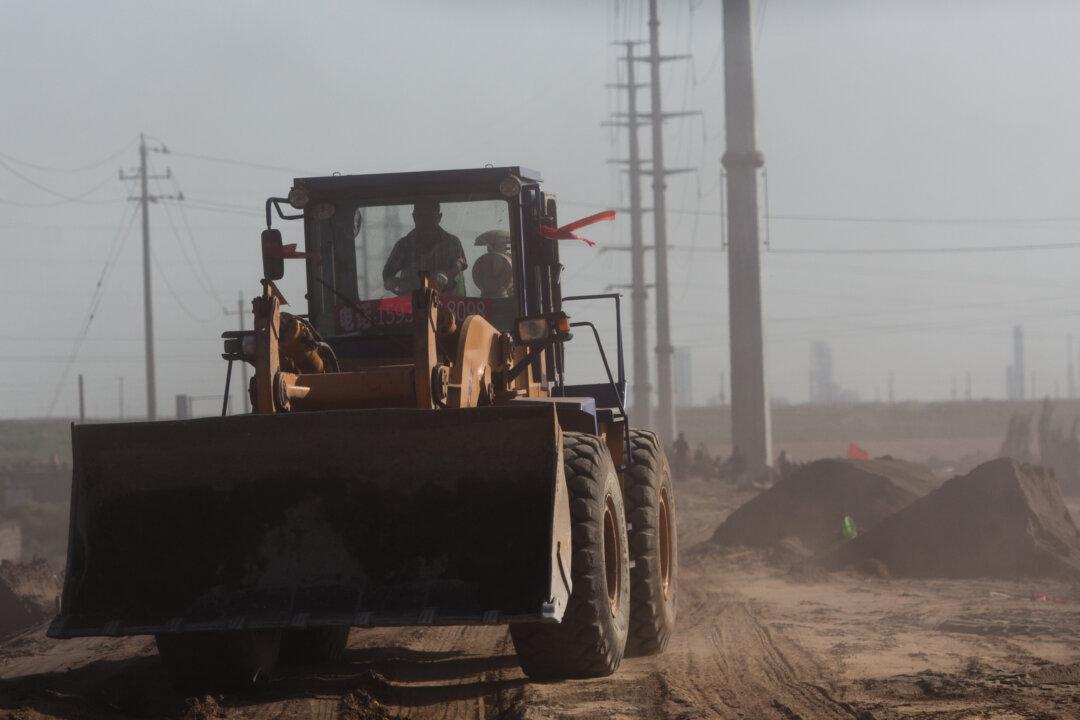Through the collective pressure of the World Trade Organization and a return of foreign competition, China’s global hold on rare earth minerals is faltering. Chinese authorities are now looking for a rebound, and on Jan. 3 approved a plan to bring China’s industry for the minerals under six state-run corporations.
The plan was written by China’s Ministry of Industry and Information Technology (MIIT). “The approval of the scheme is just the start,” reports the state-run newspaper, Xinhua. “The next step is that the six groups have to submit detailed reorganization plans to the MIIT.”
The privately owned companies are already being “consolidated” into large, state-run companies. Reuters reports on Jan. 3 the Inner Mongolia Baotou Steel Rare Earth Group, which already accounts for 51 percent of China’s rare earth minerals, acquired a 51 percent stake in each of nine local mining companies, at no cost.
Chinese authorities claim most of the smaller companies have been operating without licenses. The Wall Street Journal cites estimates from unnamed analysts that 80 percent of China’s rare earth miners, processors, and traders—essentially the entire industry—are unlicensed.
Response to Pressure
China’s announcement comes on the heels of a Dec. 16 Congressional Research Service report saying the world has become less dependent on China for the minerals. It notes that prices of the minerals has dropped 60 percent since 2011, when China controlled close to 95 percent of the global supply. China still controls an estimated 90 percent of the market.
The U.S. government report, meanwhile, came just days after China announced it would cut exports of rare earth minerals, and after both the World Trade Organization and the European Union filed complaints against China for the move.
The export cuts announced by Chinese authorities would be the first since 2011, when China cut exports of rare earth minerals and caused prices to skyrocket. The move caused a bubble in the market, and according to Rare Earth Investment News, “That bubble popped in 2012 and the rare earth market has yet to regain its former glory ... thus putting a dent in Chinese production upon which prices are so heavily dependent.”
China’s state-run newspaper Xinhua reported that China’s own miners were reducing production, as “rising overseas suppliers chip away at their dominance in the global market.” Analysts believe the state-mandated production cut is a move by Chinese authorities to recreate the 2011 price inflation.
A Limited Supply
The 2011 incident also started a wave of international concern over whether China would be a stable source of rare earth minerals. The United States and Japan both began searching for other markets, Russia invested $1 billion in a rare earth mine in Tomtorsky field in its Yakutia region, and Greenland reopened its own mining operations.
Losing a source of rare earth minerals would mean an end to most modern electronics. They are used in nearly everything from cellphones, to computers, to solar panels. They are also critical for the U.S. military, which the Government Accountability Office report states uses close to 5 percent of the rare earth minerals in the United States.
A Yale study from Dec. 2 found there are no replacements for many of the rare earth minerals. Yale researchers evaluated how all 62 of the rare metals and metalloids are used in consumer products, and concluded that “not one metal has an ‘exemplary’ substitute for all of its major uses.”
The researchers raised several questions, particularly about how long the global supply of rare earth minerals can meet the demand for electronics.
“We all like our gadgets; we all like our smartphones. But in 20 or 30 years, will we still have access to all the elements necessary to provide the particular functions that make a smartphone so great?” said Yale researcher and co-author of the study Barbara Reck, in a press release.
“Based on our findings, it is unlikely that substitution alone can solve potential supply restrictions for any of the metals on the periodic table,” Reck said.
Rare earth minerals include 17 elements from the Periodic Table, which have good electrical conductivity.
Environmental Impact
While China currently controls the majority of the global market for the minerals, they are not particularly rare. The problem is that they need to be separated from other metals, and in China both the mining and processing have been highly polluting. It has allegedly left behind heavy metals, radioactive materials, and other contaminants.
The Chinese government, itself, admitted the environmental harm the mining has caused in the country. It stated in a June 20, 2012, study that the industry has “severely damaged surface vegetation, caused soil erosion, pollution, and acidification, and reduced or even eliminated food crop output.”
It states that heavy metals from the mining have damaged the soil and caused “severe pollution of surface water, ground water and farmland.” It adds that in some areas, “the excessive rare earth mining has resulted in landslides, clogged rivers, environmental pollution emergencies, and even major accidents and disasters, causing great damage to people’s safety and health, and the ecological environment.”





